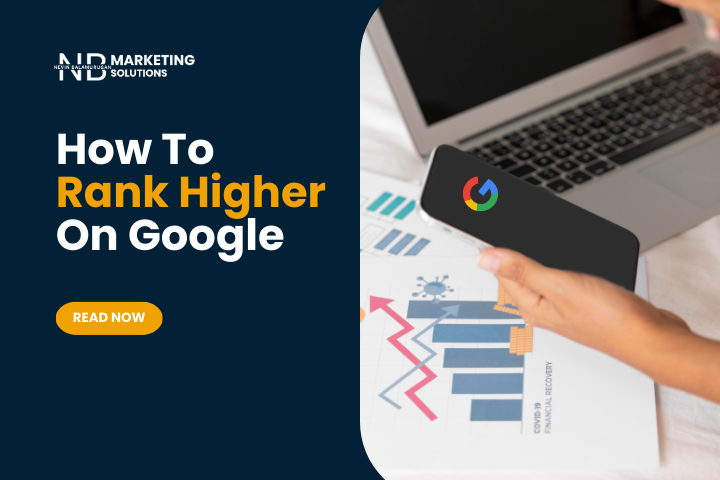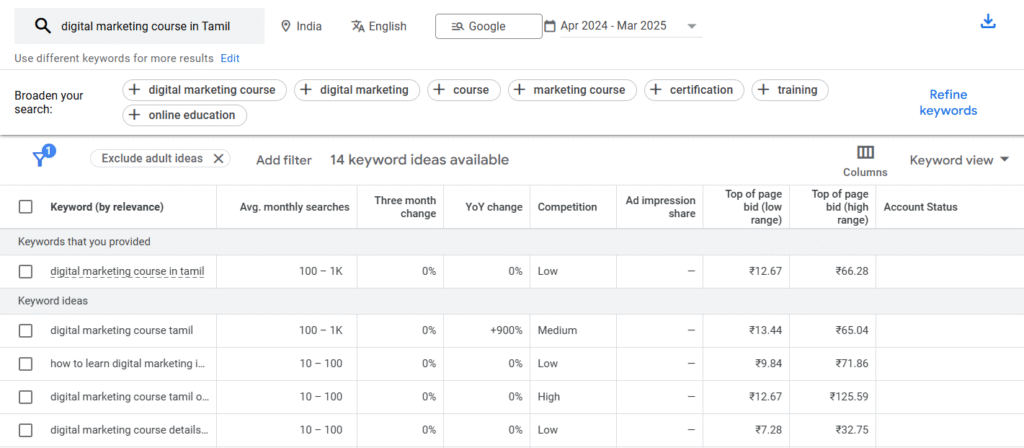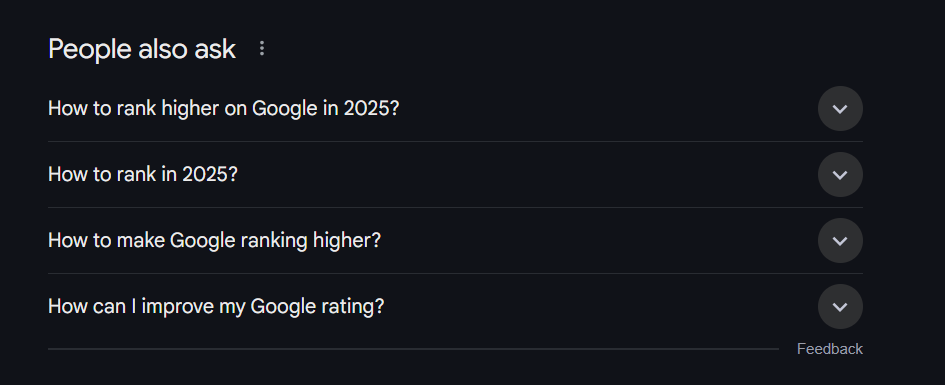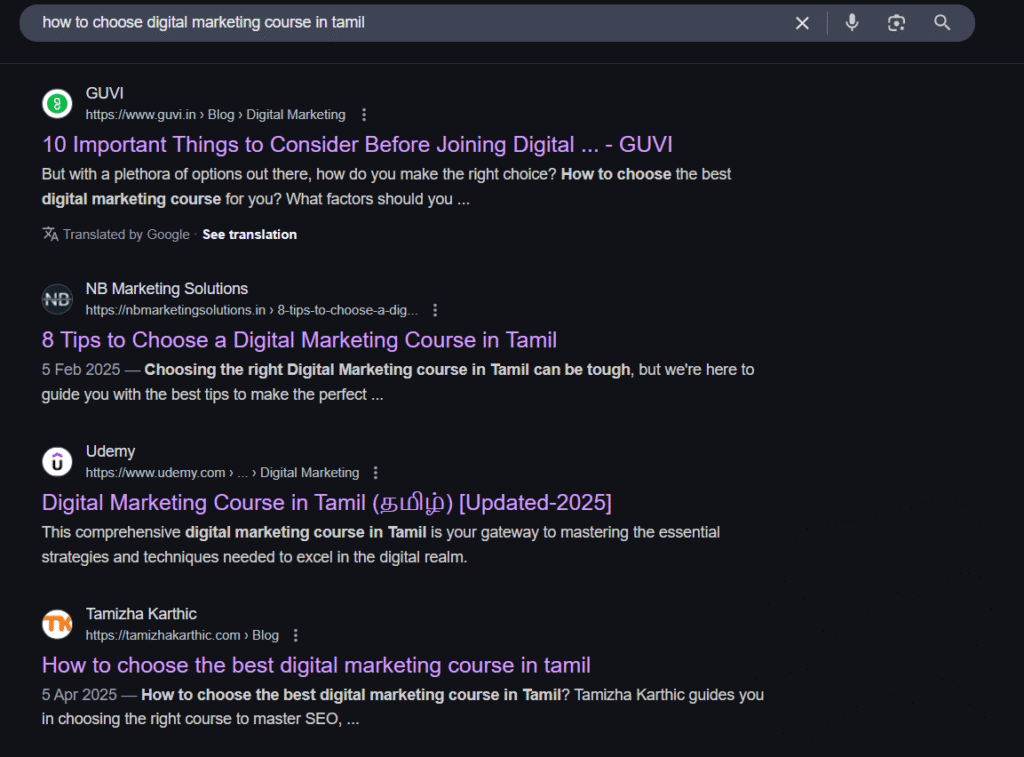How To Rank Higher on Google in 2025: Ultimate SEO Strategies
Abirami Dharmalingam
May 2, 2025

How To Rank Higher on Google: Your Ultimate SEO Strategies in 2025
Do you need to know how to rank higher on Google to get your website noticed by your customers? You’re not alone.
Many website owners invest hours of work in their content and design, only to find their site buried in search engine result pages (SERPs). It’s frustrating to see competitors quickly attracting visitors while you’re left wondering what you need to do differently.
But here’s the good news: how to rank higher on Google isn’t about luck. It’s about understanding how Google works and using proven strategies. In this blog, we’ll show you 15 key strategies to boost your Google rankings, bring organic traffic, and achieve online success in 2025.
How To Rank Higher on Google in 2025?
This section shows you 15 SEO strategies you need to be familiar with to rank higher on Google. Make sure you check off these lists if you’re looking to rank your website #1 in the SERPs.
- Perform keyword research
- Check the keyword intent
- Write long-form content
- Optimize for On-page SEO
- Target long-tail keywords, and long-tail question keywords
- Make your content skimmable
- Have clear statements
- Include visuals related to your content
- Optimize Your Meta Title
- Get Backlinks
- Analyze Search Queries
- Optimize for Technical SEO
- Target Pages Already Ranking Well
- Do a SERP Analysis Before Targeting a Keyword
- Add Schema Markup

1) Perform Keyword Research
Firstly, you need to know what your website/content wants to rank for. You want to rank for terms your target audience is searching for in the search box. Those are target keywords, but you’ll need keyword research tools to identify what’s reasonable for you to rank for.
You can use tools like Google Ads Keyword Planner, SEMrush, Ahrefs, Ubersuggest, or SE Ranking to identify high-performing keywords for keyword research. If you need ideas to do keyword research on a free platform, Google Ads Keyword Planner:
Check this blog: How to Use Google Ads Keyword Planner for SEO in 2025?
Here are the factors to identify the target keywords to rank on Google:
- Search Volume: How many times the keyword is searched for in a month.
- Competition: How difficult is it to rank for that keyword?
- Domain authority: Your domain authority impacts to ranking for keywords. Higher authority makes it easier to rank; new sites take time to build authority.
- Relevance: Choose keywords that match your content and attract the target audience.

Image Credits: Google Ads Keyword Planner
If you’re just starting out with your SEO strategy to rank higher on Google, our advice is to start with low-volume and low-competition keywords so you can gain traffic over time.
2) Check the Keyword Intent
You need to understand the search intent behind your target keyword. There are four types of keyword intent:
- Informational: Customers look for information. (Eg: How to become a Digital Marketer)
- Commercial: Customers are looking for products to make a purchase. (Eg: best smartphones below 30,000)
- Transactional: Customers are ready to make a purchase. (Eg: buy iPhone 15)
- Navigational: Customers are looking for a specific website. (Eg: Instagram Login)
If you’re primarily looking at informational intent keywords to attract your target audience. Within your informational intent keywords, you can understand the deeper intent of your customer and drag them to the buyer stage.
3) Write Long-Form Content
The key to rank higher on Google? The answer, in-depth, long-form content on the keyword you’re targeting works best on Google. Google loves blog between 1,500 to 3,000 words. This is most applicable with blog posts, but you can apply this for landing pages.
Google doesn’t like thin content, so skip the fluff and go right for the long-form content. Plus, go deep into topics, incorporate data, provide examples, and include subheadings for greater understanding. This not only increases time-on-page but also improves your chances of being ranked in multiple searches related to the topic.
4) Optimize for On-Page SEO
On-page SEO is the key factor to rank higher on Google. Here is your short checklist:
- Keyword on your content: Make sure your primary keyword is in your meta title, meta description, in the H2 section, in image file names, image alt text, the URL, and naturally in the body of your content.
- URL structure: Keep it short, descriptive with keywords.
- Internal linking: Add links to other relevant pages on your website to improve navigation.
- External linking: Include 1-3 links on your page to relevant and trusted pages to build credibility.
- Meta description: Keep it 155-165 characters, this tells the reader the value of your content.
5) Target Long-Tail Keywords and Long-Tail Question Keywords
On the important level, keywords that hit your customers’ pain points are going to be long-tail keywords. These keywords are specific, have low competition, and align with a customer’s exact search intent.
But long-tail question keywords are a bonus because they allow your content to show up higher than the top results for broader, super-high-volume keywords through the People Also Ask (PAA) section.

Image Credits: Google
While these features may not always generate a direct click, they elevate your visibility and build brand awareness. So don’t target PAA questions for the purpose of ranking on Google.
Instead, target long-tail question keywords for the primary purpose of ranking for that keyword, with the secondary goal you getting a chance to appear PAA.
6) Make Your Content Skimmable
Google is focusing on providing answers for customers rather than just a list of pages. Hence, the term “zero-click search,” where a customer gets the information they seek right in the results page without any clicks. This isn’t good for those who want to drive website traffic, but if you can’t beat it and are the source from which Google builds an answer, you’ll lose your way to rank higher on Google.
The best way to optimize for this is to make your content skimmable. This way, Google can extract snippets of your content to build answer results through the Featured Snippet. Here’s how:
- Use clear heading tags: Don’t just create headings by increasing text size, make sure they are wrapped in H2 and H3 tags with specific target keywords.
- Use specific headings: Unfortunately, SEO can sometimes limit your creativity. More than creativity, logic, and customer behavior work best on the headings of your article/blog.
- Use certain methods: Write in short paragraphs, and break down information into bullet points when possible.
Remember, even if a customer doesn’t click, your brand still earns visibility and trust.
7) Have Clear Statements
What we mean is, when you’re targeting question based keywords, even if it has multi-part answer, make sure you have an explicit statement somewhere in your blog post that provides a clear and direct answer for the question.
For instance, if your keyword is “how long should a blog post be in 2025,” make sure your article includes a sentence like “In 2025, the ideal blog post length is between 1,500 – 3,000 words depending on the topic.”
And for “how-to” keywords at the start, and you can finish off with a conclusion, “So, here’s how to”, then provide a list of the tricks or tips from the blog.
To enhance user experience and retention, include a summary section at the top or bottom of your blog.
8) Include Visuals Related To Your Content
Including images on your page can help to rank higher on Google in a few ways:
- It makes people stay longer to seek engaging content.
- Images also get a chance to rank in image results.
But to rank higher on Google for blog posts, stock images and empty pictures are not enough to work out. You need to include images that illustrate concepts, values, and examples that match the intent of the keyword.
However, optimize your images for performance (fast loading) and SEO ( alt text). Some search queries are visually dominated, so when you’re creating content on a keyword, Google it and check what kind of images appear in your target keyword’s SERP and align accordingly.
9) Optimize Your Meta Title
Your meta title is the title that appears on Google’s SERP. However, your creativity doesn’t work here because Google values customer behavior and their search intent.

Image Credits: Google
So while you might go with your meta title, stick with 60 characters or less, front-load your primary keyword, and your meta title should be tightly focused on the keyword and what users are searching for.
10) Get Backlinks
A backlink is a link from other websites pointing to your page, it is one of the most powerful options to rank higher on Google’s algorithm. If you’re already creating valuable content and sharing it on social media, chances are you’re naturally earning some backlinks.
11) Analyze Search Queries
Google Search Console will tell you what queries are letting people see your website in search results and which ones are driving actual clicks. This can help you:
- Add new headings based on popular queries
- Identify long-tail keywords for to target audience
- Optimize the content you’re already ranking for unintentionally
If Google already shows your page for a keyword you didn’t target, imagine what you could do if you did.
12) Optimize for Technical SEO
Technical SEO is all about optimizing your website’s backend structure so that search engines can easily crawl, index, and rank your pages. It doesn’t focus on content or keywords, but rather works on technical support. Make sure your website is mobile-friendly, secure, and free from crawl errors.
Here are some areas technical SEO that help to rank higher on Google:
- Crawling and indexing: Use sitemaps, robots.txt, and canonical tags to ensure your pages are properly indexed.
- Site speed: Optimize your website’s speed to improve loading times and user experience.
- Mobile Friendly: Make sure your site works smoothly on mobile devices.
- HTTPS security: Use an SSL certificate to build trust and keep your site secure.
- Fix Errors: Identify and fix broken links, redirects, and duplicate content issues.
- Google Search Console: Regularly monitor and address any technical issues flagged by Google’s tool.
13) Target Pages Already Ranking Well
If you already have pages ranking on the first or second page of Google, those are great for optimization. It can sometimes be easier to improve the performance of a blog and move the position in Google search listings. Not only that, but the former will drive a much bigger increase in traffic than the latter.
14) Do a SERP Analysis Before Targeting a Keyword
This is another strategy where you’ll need an SEO tool. If you want to rank higher on Google for a particular keyword, you’ll want to do a SERP analysis to see exactly what it requires.
Before targeting a high-value keyword, take the time to do a SERP analysis. By this, you can study the top-ranking pages to understand what content types, domains, and formats Google favors. You’ll also get a realistic sense of whether you can compete. This helps you focus your efforts and avoid wasting time on competitive search terms.
15) Add Schema Markup
Another way to enhance your visibility in search results is by adding Schema markup to your website. While not a direct ranking factor, Schema helps Google better understand the context of your content and can make your listings appear as rich results such as FAQs, how-to, reviews, and more.
This added visibility can improve your click-through rates. You can use Google’s Rich Results Test tool to see which content qualifies, and then implement structured data with tools like Schema.org or via plugins if you’re using WordPress.
Wrapping it Up
And that’s it. Google is prioritizing visual, excerptable, recent content to build rich SERPS that provide immediate answers. Use these tips to rank higher on Google so you can build authority in your niche and meet your website traffic and conversion goals.
If you need help, reach NB Marketing Solutions to find out how we can help to rank your website on #1 SERPs.
Or if you want to learn more about search engine optimization and recent tactics and strategies to rank higher on Google, enroll in our upcoming digital marketing course in Tamil to learn at your own pace and in your own language.
Recent Posts
Have Any Question?
- (+91) 938-542-1049
- info@nbmarketingsolutions.in
Categories
Make Appointment
Confused Over Choosing The Right Services For Your Business?
Tamil Nadu, India
- Near TMB Bank, Anjugramam post, Kanyakumari 629401
- info@nbmarketingsolutions.in
- (+91)93-8542-1049
